AtoZ Markets - Swing Trading is a trading method that focuses on profiting off switching directions in the price context on comparatively short time-frames. Swing traders are always willing to catch upswing and downswing in the asset price. Most traders hold the position for one to five trading days, although some traders hold for a few weeks if the trade is in profit.
What Is Swing Trading?
Elementary trading that holds positions for longer than a single day is described as Swing trading. In most cases, swing traders are ultraconservative. Because alteration of corporate principles usually demands a few days or a week for adequate price movement to execute an expedient profit. It is a simple portrayal of swing trading. Swing trading is in the center of the continuum amidst in trend trading and day trading. Trend traders experiment long-term basic trends of an index or stock. They may retain the stocks for weeks or months. And a day trader retains the stock or assets from a few seconds to a few hours but that is not more than a day. And swing traders retain a certain stock for some period which can be usually a few days to two-three weeks.

| Pros | Cons |
|
|
|
|
|
|
Want to trade Forex with a reliable broker? Open a live account with AtoZ Markets approved forex brokers:



Swing Trading vs Day Trading
Methods of Swing Trading
-
Fibonacci Retracement
-
Support and Resistance Triggers
-
Channel Trading
-
10- and 20-days SMA
1. Fibonacci Retracement
Traders used Fibonacci retracement to identify the support and resistance levels, where the market can possibly reverse back. An asset often took retracement on a certain percentage in the trend before continuing again. Moreover, the classic Fibonacci horizontal lines ratios of 23.6%, 38.2%, 50% and 61.8% on an asset chart can be potential reversal levels. However, most powerful Fibonacci levels are 50% and 61.8%, where the most reversals happen.
A trader can enter a short-term trade when the market is reversing and hold it until the price bounces or rejects 50% or 61.8% Fibonacci levels.

2. Support and Resistance Trigger
Support and resistance lines are the foundation of the technical analysis and you can build a swing trading strategy near them. A support level represents the market's potential bounce area or where the buying pressure may occur. In contrast, a resistance level represents the market's potential rejection area or where the selling pressure may occur. A trader would look for a sell entry on the resistance area and a buy entry on the support area. Besides, traders put their stop loss above or below the resistance or support level and tasks profit when markets hit the opposite level.

Want to trade Forex with a reliable broker? Open a live account with AtoZ Markets approved forex brokers:



3. Channel Trading
Indication of a potential trend and trading in a channel is the main requirement of this swing trading strategy that you need to recognize in a stock. When the price goes down off the top line of the channel, you would consider opening a sell position. And that is only if, on a stock chart, you capture a channel near a bearish trend. To trade with the trend is vital while using channels for swing trade stocks. Unless price breaks out of the channel, moving higher and signifying a change and the beginning of an uptrend, you would only search for buy positions when the price is in a bullish trend.

4. 10 - and 20 days SMA
Using the ten-days and twenty-days simple moving averages (SMA) is the most popular swing trading technique. Trades used these two SMA's to identify the crossover or to confirm the swing points. When ten-days moving average crosses twenty-days moving average upside, it means to market in an uptrend. On the other hand, when the ten days SMA crosses twenty days SMA downward, it means to market in a downtrend.

Summary
Swing trading, in reality, one of the best trading styles for beginner traders, who can start their journey with. It can be very beneficial for intermediate and advanced traders. There are lots of trading methods that you can choose depending on your psychology and mindset. Before switching to the real account you should practice swing trading on the demo account to improve your trading for consistent outcomes.
Should you trade Forex on your own at all?
Before you start trading Forex, you'll want to read this.
Our in-house trading expert Dr Yury Safronau, PhD in Economic Sciences, gives you daily his best forex, metals, and cryptocurrencies to buy and sell signals right now.
His trading strategies which are based on non-linear dynamic models have achieved more than 65 000 pips of profits since 2015. And right now there are some very strong buy and sell signals across several markets you don't want to miss.
Want to see which ones?



